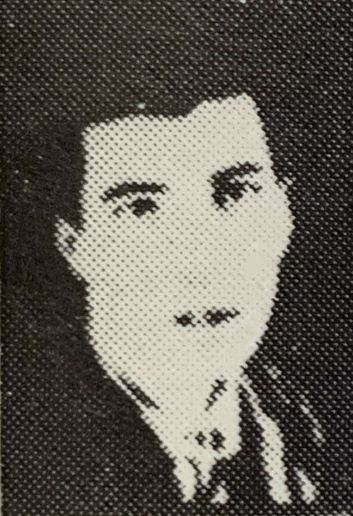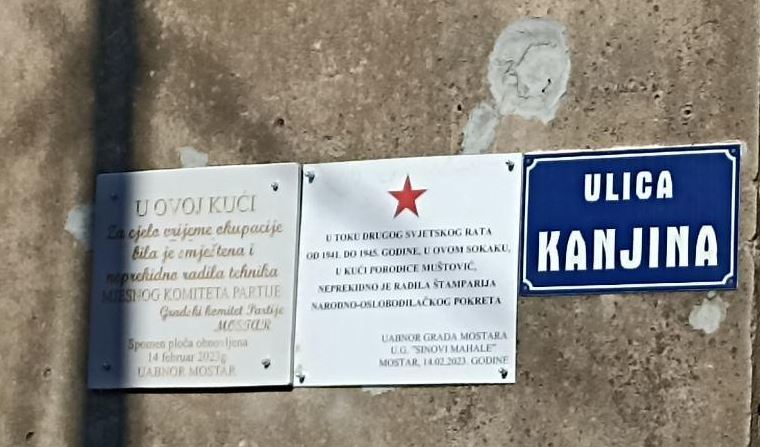
brochure "Partizanski spomenik u Mostaru" (1980)
book “Spomenica Mostara 1941-1945.”
another document or proof of the memorial stone (e.g., a photograph).
Husnija Š. KANJE
HUSNIJA S. KANJE, born on October 25, 1921, in Mostar, a farmer (gardener), became a member of the Communist Youth League (SKOJ) in 1941. He joined the Battalion in February 1942. He was a fighter and was killed in Janjina near Konjic in April 1942 in the unit of Ante Zuanić. In the same battle where the ratio was almost 20 to one, Mustafa Kanje also lost his life. One Kanje was the first to fall, and the other, wounded, fired his last bullet at himself to avoid falling into the hands of the enemy.
There is a street in Mostar called Kanjina, possibly named after members of Kanje family.
Regarding the battle in the house in Janjina:
“When they encountered fierce resistance in Dramiševo on April 8, 1942, the Ustasha forces proceeded towards Janjina and descended upon Ante Zuanić’s unit. Suddenly, they surged from all sides out of the forest and surrounded the house where the unit was located. It was a single-story rural house covered with planks. The partisans accepted the fight – their nine against 170 Ustasha soldiers. It was an unequal battle. The unit positioned themselves inside the house and boldly opened fire on the enemy. A fierce battle unfolded. The fighters shot through windows, doors, and from the walls under the roof. With clear visibility outside, the enemy, greeted with accurate fire from the partisans, could not approach the house. In that battle, the unit killed five and wounded several Ustasha soldiers. However, trouble arose with the arrival of darkness. As darkness prevailed, the Ustasha forces approached the house more closely. Additionally, the partisans were running out of ammunition. One of the Ustasha militiamen, who was a local resident – knowing every inch of the land around the house and protected by darkness – approached the wall and set the house on fire. The roof and other wooden structures began to burn like a torch. The house turned into a blaze. This led to even greater trouble – the fighters began to be choked by thick smoke. It became increasingly hot and unbearable. The air became so scorching that the defenders felt as if they were under a hot frying pan. Burned planks and beams started falling on the fighters’ heads, scorching their flesh. Despite this, they continued to fight heroically and repelled all enemy attacks. The danger of being burned alive loomed… Among the nine fighters were Mustafa and Husika Kanja, workers from Mostar. One of them died on that occasion, and the other was wounded. Some of the surviving fighters began to contemplate taking their own lives so as not to fall into the enemy’s hands alive. The wounded Kanjo, with only one bullet left in the chamber, turned towards the enemy and exclaimed: ‘Long live the Communist Party of Yugoslavia! Long live the partisans! Long live the Red Army!’ Then he turned the barrel of the rifle towards himself and pulled the trigger. This had a distressing effect on the other fighters. They decided to attempt a breakthrough after all.”
Ćemalović, Enver (1986): Mostarski bataljon, Mostar; Seferović, Mensur (1981): „Istočno i zapadno od Neretve“, „Narodna armija“, Beograd; Ćemalović, Enver (1986): Mostarski bataljon, Mostar; grupa autora (1986): Hercegovina u NOB 4. dio, Beograd ; grupa autora: Spomenica Mostara 1941-1945.
Photo of the memorial plaque: S. Demirović.
Do you have more information about this fighter? Share your stories and photographs. Let's keep the memory alive!


